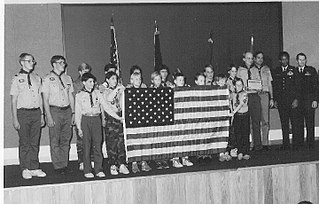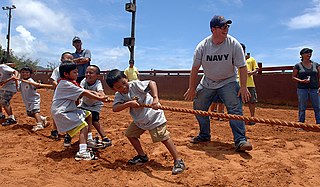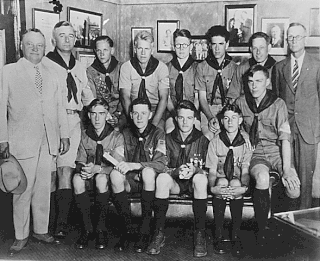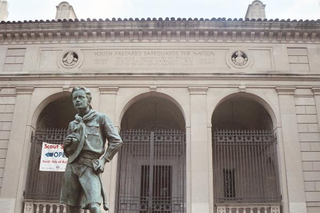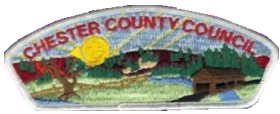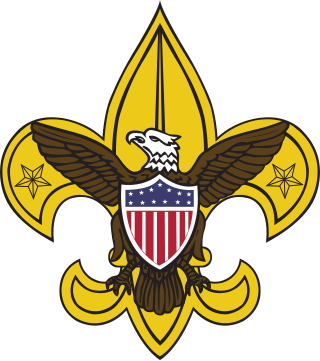History
According to BSA records and Reports to Congress, BSA overseas councils were referred to as "Extra Regional"—being outside the BSA's then-twelve Scouting regions in the states, which were consolidated in 1973 to six and again to the current four in 1993. Overseas councils were organized in the Panama Canal Zone (1923), Beijing, China (1923), Philippines (1924), and Guam (1947). The "Direct Service Council" was formed in 1956, as a result of conversations within the BSA's national office in New Jersey. Several Scouting associations, on behalf of their American citizens living in those countries, wanted to have American Scouts and Scouters to serve as part of their associations while overseas. In fact, the high commissioners in Japan, Europe, and Panama invited BSA to send commissioned Scout executives to help create a program for Americans living overseas. International Scouting accords discouraged such memberships except via wartime criteria that allowed for a small number of youth to take part in local programs when no program of their own host nation existed. The BSA's response was to create within the International Division a "local Council equal" which would do many if not all the services which the BSA provides to communities in other areas of the world and within the United States. These services include membership accounting, unit chartering and rechartering, advancement reporting and filing, insignia and badge issuance, certification of awards and advice on where to conduct Scouting-related activities (mostly camping or ways that the BSA's requirements to "visit community agencies", for instance, could be met while in Zaire or the Isle of Man or in Peru). Direct Service Council did not include Transatlantic, Far East, Aloha, or Canal Zone Councils which had BSA charters to operate as councils since the early 1950s.
The Direct Service Council was headed initially by James R. Sands, the Associate National Director of the BSA's International Division and assisted by two staffers and two technicians. Key national staff officers working within the BSA's National Office wore "extra hats" as Direct Service Council "staffers"; while key volunteers served as members of the Executive Board of the Council and key BSA youth members were initially made leaders of the Council's youth programs until the Council could get on its feet. After 1974, the Council elected their own Council officers (by mail) and an election was held to elect youth representatives for their Order of the Arrow Lodge and their Explorer Presidents Association chapter. In 1989 the practice was discontinued and appointments were made directly through postal mail from the national office.
In areas whereby significant numbers of American citizens lived, "District" organizations existed. These areas included Hong Kong, Guatemala and Central America, Saudi Arabia and Kuwait, Kenya and the countries surrounding Lake Victoria, Mexico and the Caribbean, and Canada. Each "District" had a volunteer structure, to include District Chairs and members as well as Commissioners to assist existing and new units. Some "Districts" even raised the funding necessary to "borrow" an executive with a multinational firm to serve as their District's professional representative; in other cases, firms like Saudi Aramco "donated" an executive to head up Scouting in that part of the world. Those individuals coordinated directly with the BSA's International offices and in the 70s and 80s had the resources to quickly get materials, training aids, awards and insignia, and uniforms to youth and adult members within their areas.
While the BSA officially had no "Districts" within Direct Service Council, they did respond positively to the effort by creating special versions of the traditional Direct Service Council insignia to be worn by youth residing in those parts of the Council's "territory" without calling them "Districts". Before Direct Service Council folded, there were ten official such "Council Shoulder Patches" or CSPs in addition to the default CSP. In many areas of the Council, individual units and parents of Lone Scouts created their own unofficial CSP emblem to wear, with flags and symbology of the local area on those patches, instead of the standard emblem. A 12th such emblem was created when Canal Zone merged with Direct Service later.
In 1973, the Direct Service Council newsletter was created, to further provide information to DSC Scouts and Scouters and those serving on its Council "staff" and "leadership". Much of the information was copied from other BSA publications with specific information about registration, how to participate in BSA national and international activities/events, and new forms placed as inserts. In 1975, the first instances of the word "District" were printed in the newsletter, further acknowledging the growth of this "notional local Council."
The "expansion" and "contraction" of the Direct Service Council depended heavily on the numbers of Americans living in those countries not served by active BSA Councils overseas. This explains why in some years individuals or specific countries in Europe, North Africa, and the Near and Far East were alternately parts of Aloha Council (serving many Pacific island nations), or Transatlantic Council (serving much of Europe, Northern Africa and the Near East) or the Far East Council (serving the far end of the Pacific rim) one year, and the next year part of Direct Service Council. Council territories expanded and contracted, which made it important that the small International Division staff stay in constant touch with overseas Councils and their professional staffs.
With the retirement in 1986 of Jim Sands, the BSA's biggest defender and supporter of International Scouting, Margerite ("Marge") Weilexbaum was appointed as the Council's Administrator, who provided administrative services normally provided by a commissioned professional Scouter. She attempted to hold things together until her retirement in 1995.
In 1987, the former Panama Canal (Zone) Council was consolidated and made a part of the Direct Service Council, in a similar way that other Councils were consolidated or merged to form larger local Councils in other areas of the world. An "official" 12th CSP issued by the former Council for its youth to wear featured the words "Direct Service" in addition to the words "Canal Zone." While not officially created by the BSA, the patch was worn by DSC youth and adults living in the Zone until the middle 90s.
In 1990, a national office shakeup and reorganization slimmed down the International Division and many of its functions were sheared off to other program divisions within the National office. Many DSC Scouters state that this was the start of the end of the Council.
With the retirement of its longtime Administrator five years later, several decisions were made with regard to the Council.
The first was that it would no longer serve or be listed as a "local Council" but rather, in the traditions of the old Lone Scout Service, would serve as a "service element" within the National office. Scouts and Scouters would continue to receive "direct service" from the staff, but the staffing would be cut almost to the bone — from five to two. It was understood that with the advent of faster communication and coordination between units and individuals in the field and the national offices, that the existing staffing support was no longer needed. The newsletter was discontinued.
The second was that all supporting elements which made Direct Service a true gem in the eyes of those members and Scouters in the field would be eliminated. This means that in some locations, the "borrowed executives" used to support "district and multi unit" activities in the Council would no longer be supported. BSA Camp inspections at several camps in the former Council would also cease, as well as most Order of the Arrow activities. The Lodge would continue, and individual units may continue to hold OA elections. The actual Ordeal, Brotherhood, and Vigil Honor ceremonies, however, would be conducted by local Councils in Europe, the Far East or Pacific or held until the Scout or Scouter could return Stateside to participate. This was further restricted by the Order of the Arrow in 1999.
The biggest impact was that the Council could no longer conduct sustaining membership enrollment, or "Friends of Scouting" campaigns as a Council any longer. Units, individuals and those organizations and corporations supporting American Scouting around the world would instead be asked to donate directly to the National Office with funding no longer "earmarked" for the Direct Service Council, but placed in the general operation funds of the BSA.
In 1998, the word "Council" was finally removed from the Direct Service and plans to no longer issue or sell the ten existing Council CSPs would be made. The Direct Service Council finally died although the BSA continues to this day to provide "direct service" to youth and adults living and working around the world—in those locations where there no longer exists a BSA local Council. [3]







